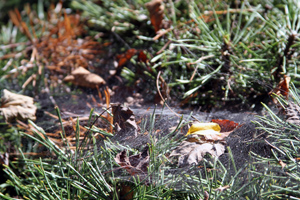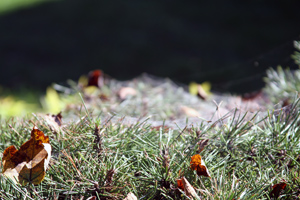Enviroguard Pest Solutions
706-965-9078
Exit 345 on I-75
456 Bandy Lane, Ringgold, GA 30736
Spiders
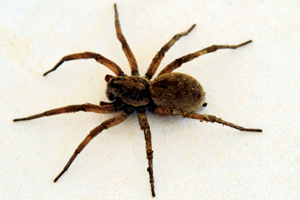
Why am I seeing so many spider webs this fall?
It’s not the Halloween season that is responsible for the spiders but it is the time of year when spiders are mating and producing egg sacs to reestablish the population for the next spring. Their webs can be found near places where insects are attracted especially near a porch light. Spiders are beneficial as they perform “pest control” services on a number of bugs, flies, and beetles as their food source. They catch their prey in their sticky webs. Most spiders spin a web before dawn and then deconstruct it every evening. Many spiders are nocturnal.
You may also see horizontal spider webs on the ground. These ground-dwelling spiders trap insects that fly up from plants below. Vertical webs on the side of your house, for example trap flying insects. In the fall, spiders eat as much food as possible and mate and the females lay their eggs and often die. The egg-cases may contain hundreds or thousands of eggs. Baby spiders hatch in the spring. Spiders grow by molting their cuticle or skin. Their coloration is a camouflage to predators like birds and wasps.
You may notice many spiders will spin a new web near the location of the previous web. Spiders have spinnerets that extrude silk from glands within their abdomen. On a foggy fall morning, the webs are easy to spot and you will notice they vary widely in shape and size. Interestingly the spiders only eat liquid food and they either pump digestive enzymes into their prey or suck out the liquefied tissues or they may grind their prey to a pulp. You may see dry, hollow insects that have been a meal for the spiders.
Spiders are widely feared yet most species are not dangerous. Even recluse and black widow spiders only bite when trapped. Often alleged cases of spider bites are incorrect diagnoses. Many people have arachnophobia or an abnormal fear of spiders – it is the most common phobia. But, don’t worry Enviroguard can help. We use special “websters” or dusting sticks to remove spider webs and concentrate on eliminating the flying pests spiders feed on. Spiders that live longer than one season spend the winter under rocks or in basements and attics. Enviroguard’s Pest Management Professionals will treat these areas as well.
Spider Facts:
There are nearly 40,000 species of spiders worldwide and about 3,800 in the US.
Spiders range in size from small enough to balance comfortably on the tip of a pencil to almost 14 inches in diameter.
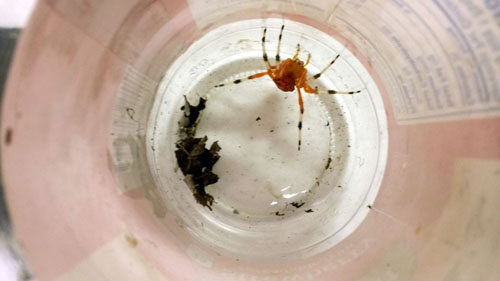
Spider Silk
Spider silk is one of the strongest natural fibers known.
Bridge builders have studied spider webs because of their remarkable ability to absorb tension.
Spider Venom
Components of spider venom show promise in medical research, including areas of Alzheimer's and Lou Gehrig's disease and even in preventing permanent brain damage in stroke victims.
There is no correlation between the size of the spider and the degree of venom potency.
Strange But True...
Little Miss Muffet was a real person. Her name was Patience Muffet and she was the daughter of Thomas Muffet - a late 16th and early 17th century entomologist.
Aristotle advocated swallowing a spider every day as a means of staying healthy.
However, homeowners aren't completely off base in their strong dislike for these household pests. Various species of spiders found in the United States pose serious health threats and require vigilant control procedures.
What are the key Spider Treatment Strategies?
Inside -- Look for Spiders
Find them in corners, windows, around plants, in closets, basements and in attics.Outside -- Look for Spiders
Find them on porches, garages, windows, decks, near rocks and under houses, basements and attics.Keeping Your Home Spider-Free
a. Use a vacuum cleaner with an extension wand to knock down webs.
b. Use a broom outside to knock down webs.
c. Vacuum and mop frequently to remove any food that could attract bugs.
d. Remove any dead insects.
e. Be sure to have regular monthly or at a minimum quarterly Enviroguard Pest Solutions service since spider are attracted to pests as a food source.
Why do I have so many spiders in my home?
Spiders are predatory and use your home as a harborage site. Check the underside of vinyl or wood siding on your home’s exterior and you may find spiders working their way inside. Spiders are also there because you may have another insect problem that has attracted spiders to this food source. The insects caught in the spider's nest will help your pest management professional identify your pest problems. Eliminating this food source will help eliminate the predatory spiders as well.

Above: A fall vertical spider web
Below: Grass spiders spin horizontal webs
Brown Recluse Spiders
Do we have brown recluse spiders in our area?
Yes, we do. The Center for Disease Control and Prevention (CDC) reports that nearly twenty percent of the 10,000 spider bites reported each year are attributed to the brown recluse spider. Experts, however, insist these spiders rarely bite and when they do, most bites are not severe and some 90% heal without treatment. The Center for Disease Control also reports the suspected bites are from outside the spiders’ geographic range and maintain that many medical conditions and injuries cause skin necrosis similar to the brown recluse bite including bites of other spiders, poison ivy, and diabetic ulcers.
Nevertheless, spiders, and the brown recluse in particular, has received much recent attention. Most everyone knows someone who has been bitten by this spider. The pest control industry continued to treat more homes for spider problems in recent years than in previous periods. One customer called us for help after moving into a recently purchased home that was overrun by the brown recluse spider.
While most homes don’t have such a large population to eliminate, it is important to understand spiders to better control and eliminate them from your home. Often the spiders enter homes on their own, particularly when there is an abundant source of food. And the spider’s favorite food is, of course, insects. Spiders are frequently seen near water and they may be brought into homes in boxes, firewood, or even on clothes, shoes and items bought from a yard sale, for example. While the brown recluse spiders are primarily located in the central south and Midwestern U.S., these spiders can also be shipped anywhere in furniture or boxes from infested locations.
They earn their name because they are typically “reclusive” and are found in little-used areas like cluttered attics, closets, and storage rooms. They are not active in the daytime and typically only bite when trapped or disturbed. A fully mature spider, including the body and legs, is the size of a quarter. They may be light brown to light grey and have a distinctive dark mark on their back shaped like a violin. Mature cellar spiders are often identified as a brown recluse spider because they are about the same size and color, but lack the violin shaped spot. They are not considered a danger.
Depending on the severity of the infestation, treatment for spiders can take several hours. You pest management professional will use monitoring glue boards to assess the spider populations. In addition to controlling the spider populations, your Enviroguard technician will also work to aggressively eliminate other insect food sources that are attracting the spiders. Homeowners can aid in spider elimination by cleaning and clearing storage areas, add lighting to basements and garages, cleaning winter clothes and storing them properly, and shaking out any items purchased at yard sales. Also inspect incoming shipments of furniture and gifts and open such packages outside, if possible. It is important to have follow-up inspections and monitoring to control the brown recluse spiders.
Black Widow Spider
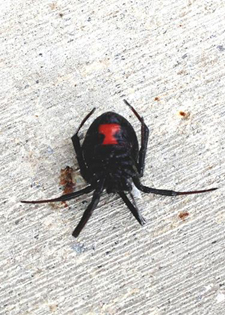
- Females are about 0.5 inches long, 1.5 inches when the legs are spread
- Males about half the female's size, with smaller bodies, and longer legs
- Females and males have a shiny, globular abdomen
- Females and males are black and sometimes brown
- Females usually have a reddish hourglass shape on the underside of her abdomen. Some species have a series of red spots and two crosswise bars on the underbelly
- Males usually have yellow and red bands and spots over the back as do the immature stages
- Newly hatched spiderlings are predominately white or yellowish-white, gradually acquiring more black and varying amounts of red and white with each molt
- Juveniles of both sexes resemble the male and are harmless to humans
Black widows are notorious spiders identified by the colored, hourglass-shaped marking on their abdomens. The spider's bite is much feared because its venom is reported to be 15 times stronger than a rattlesnake's. In humans, bites produce muscle aches, nausea, and a paralysis of the diaphragm that can make breathing difficult. Bites can be fatal, usually to small children, the elderly, or the infirm. Fortunately, fatalities are fairly rare. The spiders are nonagressive and bite only in self-defense, such as when someone accidentally sits on them.
Black widow spiders are common in our area. They are shy and nocturnal and are found on the undersides of ledges, rocks, in plants and debris, and wherever a web can be spun. Cold weather and drought will drive these spiders into buildings.

